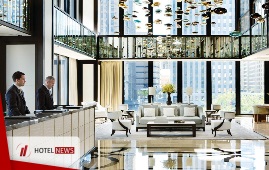
Technique 86 Display High Quality Outdoor Furniture; All outdoor furniture should be of high quality (even at limited service and economy properties). Viewing outdoor furniture subconsciously sets the tone for what the guest will receive once inside. Technique 87 Keep Elevator Flooring Clean; Due to the use of rolling suitcases, one of the biggest prob- lem areas with regard to public space cleanliness is the elevator floor. Staff should be trained to check and clean the flooring in the elevators several times per shift. The cleanliness of the ele- vator is a factor in initial perception formation and also influ- ences guests’ perceptions throughout their stay. Technique 88 Offer Branded Rubber Duckies; When a family with a small child or baby passes a house- keeping cart in a corridor as they are returning to their gues- troom, the housekeeper should offer the family a rubber duckie that is branded with the hotel’s name/logo. ghout their stay. Technique 89 Create a Photo Zone; Photo Zone—With Selfies being the “in thing”, cre- ate a backdrop, banner, or something unique to the hotel (including your logo or hotel name) where guests can take pictures of themselves or, if they want a photo with a cam- era, an employee can easily take a picture of the guests. Encourage guests to share it on social media or a blog. This is another way for guests to remember their experience in a positive way. Technique 90 Routinely Eliminate Scuff Marks; At least two times per week, a member(s) of the engi- neering team should inspect all public corridors and remove scuff marks from walls with cleaning products such as Magic Erasers. This task should be part of the engineering team’s preventative maintenance schedule. Technique 91 Play Music in the Lobby; Music that matches the brand personality of the hotel should always be played in the lobby. Employees should under- stand the value of the music in reinforcing brand personality. Technique 92 Scent the Lobby; The hotel’s lobby should be scented year around with the same fragrance. Repeat guests will recall the scent when they return. This strategy can be achieved through plug-in aroma- therapy products or by burning scented candles. Technique 93 Afford Adequate Attention to Restroom Cleanliness; The public restroom cannot take a “rest” from service. The cleanliness and messiness of a restroom set the tone for other facets of a guest’s experience. If a guest sees a dirty restroom, automatically s/he will have a negative impression of the hotel. Technique 94 Use Bright Lighting in the Restroom; The hotel’s public restrooms should have very bright flu- orescent lighting. Such brightness helps the restroom appear clean. Technique 95 Give Back-of-the-House Tours; When a potential catering and conference client arrives for a site visit, show him/her the back-of-the-house areas first. Including the back-of-the-house demonstrates that the hotel pays enough attention to detail to keep those areas neat and orderly similar to the front-of-the-house. This effort also aids in making the potential client feel as if s/he is getting to know the team. Technique 96 Provide Employees with Business Cards; Have business cards with all the pertinent hotel informa- tion. Leave space on the card for an employee to be able to handwrite his/her name and position. Should a guest need hotel information, the employee can hand them out. This effort serves as a personalized service and the guest will know who to ask for if they need anything. This gesture comes in handy on many occasions and is fast and personalized as well. Technique 97 Offer Branded Gloves; If a guest is exiting the hotel in the winter time without gloves, offer a complimentary pair of gloves branded with the hotel’s logo. Technique 98 Display a Looking Glass; If a window in one of the hotel’s public spaces has a nice view, then affix a looking glass on a string to the wall next to the window. Technique 99 Screen the Outdoor Break Area from Guest View; The hotel needs to have an outdoor break area for asso- ciates that are 100 percent screened from guest view. Such screening can be achieved with landscaping and/or decorative fencing. When a guest sees hotel associates on break smoking cigarettes, this is one of the biggest ‘experience breaking’ prob- lems in the industry and is also one of the most common. Technique 100 Offer Wagon Rides for Small Children; The hotel should have wagons in the lobby that are cus- tomized with a seat and side paneling so that families can give their children safe rides to their guestrooms. Custom- ized wagons can also be available for pet transportation to the guestroom. Technique 101 Have a Child-Sized Luggage Cart Available; Just as some grocery stores have child-sized grocery carts, a hotel can have a child-sized luggage cart. The child can help co-create the lodging experience by placing his/her suitcase on the small cart and pushing it to/from the guestroom at check-in/out. Technique 103 Make Bicycles Available; If the hotel is located in a bicycle-friendly area, then have some bicycles and helmets available to the guests at no charge. Guests can sign a liability waiver form and borrow the bicycles when desired. Technique 104 Denote Empty Parking Spaces; When the hotel’s parking lot or garage is near maximum capacity, helium balloons should be placed in the remaining parking spots. Viewing the balloons from a distance will allow guests the opportunity to find the open spots without wasting time or fuel. Technique 105 Encourage Clutter-Free Storage Areas; Any areas that are visible to the guests when a door is open (e.g., service area, behind the front desk, office, storage room, etc.) should be free of clutter and anything that can be construed as unsanitary. Technique 106 Conduct Signage Audits; At least once per year, a 3rd party who has never been inside the hotel before should be asked to do an internal and external signage audit to confirm that signs are accurate and are not confusing (particularly directional signs). The signage audit could be traded for a room night. Technique 107 Print Hometowns on Nametags; All associates should have their hometowns printed on their nametags because this information helps facilitate con- versation with guests. Technique 108 Display Photos of Famous Locals; Display pictures of famous people from the local or sur- rounding area in the hotel’s public spaces—doing so helps connect the guest to the hotel. Technique 109 Offer Swimming-Related Amenities in Pool Area; If the hotel has a swimming pool, guests love the extras of a pool experience, especially in very hot weather. These items can be misters, cold washcloths, ice water, etc. Technique 110 Offer to Augment Diving Toys with Gold or Silver Coins; If the hotel has a swimming pool, if children are seen diving for coins, they should be given gold or silver coins inscribed with the hotel name/logo to use instead. They can keep these as souvenirs. Technique 111 Keep a Well-Stocked Bookcase; The hotel should have a bookcase in a public area from which guests can borrow books (including children’s books) to read or games to play during their stay. Some books should be about the local area.
Create: May 2, 2020 Edit: Aug 13, 2020 Hotel Management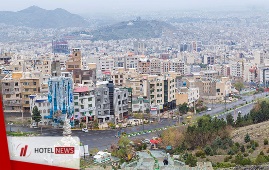
Fakhreddin Saberi Director General of Alborz Cultural Heritage, Tourism and Crafts Office; Alborz province, due to the spread of the corona virus, will not welcome tourists and travelers during Nowruz. Following the instructions given to the accommodations, we see a decrease in the number of passengers in these places.
Create: Mar 14, 2020 Edit: Mar 14, 2020 Regional News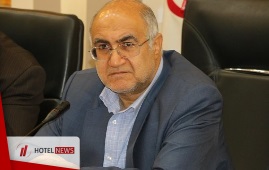
Kerman Governor Mohammad Javad Fada'i Due to the increasing number of "Corona" positive test in Kerman, travel to this province has been banned, and the largest province in the country can not accept passengers until the end of the corona virus epidemy. The establishment of special camps at the entrance of the province will prevent travelers to Kerman.
Create: Mar 14, 2020 Edit: Mar 14, 2020 Regional News
Sayed Musa Khademi, Governor of Lorestan announced; Travelers avoid travel to Lorestan because they will receive no service from accommodations. In order to prevent the spread of the Corona virus, we will not receive any guest Lorestan. We cannot block the entrance and exit of the province due to the daily entry of 6,000 cars into the province through Boroujerd and Paul Zal.
Create: Mar 14, 2020 Edit: Mar 14, 2020 Regional News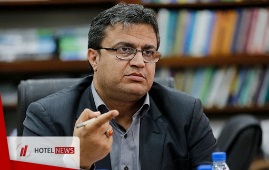
Mehrdad Sotoudeh, Vice President of Development Projects of Bushehr Governorate; Lack of hygiene and unnecessary travel will cause a crisis in the province. Unfortunately, this year, due to the spread of the Corona virus, there will be no tourism services provided and accommodations will be closed. Guest home operators in the province who ignore warnings are severely dealt with
Create: Mar 14, 2020 Edit: Mar 14, 2020 Regional News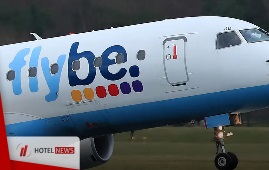
Flybe Airlines has declared bankruptcy due to a sharp decline in passengers following the Corona outbreak. The company has told its customers that all its flights have cancelled and all its business in the UK has been halted.
Create: Mar 7, 2020 Edit: Mar 7, 2020 International News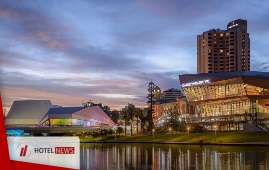
Australian tourism officials have warned that if hotels guests number continue to shrink due to the spread of the Corona virus, hotels in Australia will have to be closed. Hotels in the cities of Queens and Gold Coast, which have mostly Chinese, Japanese and Korean guests, offer their rooms this week at half the price of previous days.
Create: Mar 7, 2020 Edit: Mar 7, 2020 International News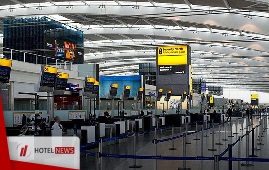
No new bookings, just cancellations: that is one leading airline’s current sales pattern for Italy. The slump in airline bookings due to the spread of Covid-19 has been laid bare in figures revealed by the International Air Transport Association (Iata).
Create: Mar 6, 2020 Edit: Mar 6, 2020 International News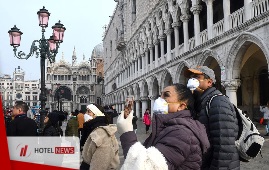
Due to Corona virus outbreak, Italy's economy, including the tourism industry, has been influenced by the spread of the Corona virus, and the governor of Veneto ordered the opening of all schools, cinemas, museums and public places on Monday. In Italy, more than 400 people have been infected with the coronavirus. Many sports competitions were postponed following the outbreak. Many foreign tourists canceled their planned trips to its cities, including the historic city of Venice.
Create: Mar 1, 2020 Edit: Mar 1, 2020 International News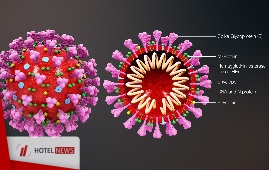
WHO has developed a dashboard for Novel coronavirus (2019-nCoV) with the number of confirmed cases globally, which includes cases in China by provinces, regions and cities, as well as confirmed cases outside China by country. HIGHLIGHTS No new countries reported cases of 2019-nCoV in the past 24 hours. The infection prevention and control (IPC) global network is convened through weekly teleconferences with international IPC experts to discuss technical aspects of IPC measures, share epidemiological updates and experiences regarding the IPC measures put in place in affected countries. In consultation with the global IPC expert network, WHO has released three key IPC interim guidance materials on IPC measures during health care and home care, as well as advice on the use of masks in various settings. RECOMMENDATIONS AND ADVICE FOR THE PUBLIC During previous outbreaks due to other coronavirus (Middle-East Respiratory Syndrome (MERS) and Severe Acute Respiratory Syndrome (SARS), human-to-human transmission occurred through droplets, contact and fomites, suggesting that the transmission mode of the 2019-nCoV can be similar. The basic principles to reduce the general risk of transmission of acute respiratory infections include the following: - Avoiding close contact with people suffering from acute respiratory infections. - Frequent hand-washing, especially after direct contact with ill people or their environment. - Avoiding unprotected contact with farm or wild animals. - People with symptoms of acute respiratory infection should practice cough etiquette (maintain distance, coverncoughs - and sneezes with disposable tissues or clothing, and wash hands). - Within healthcare facilities, enhance standard infection prevention and control practices in hospitals, especially in emergency departments. - WHO does not recommend any specific health measures for travellers. In case of symptoms suggestive of respiratory illness either during or after travel, travellers are encouraged to seek medical attention and share their travel history with their healthcare provider.
Create: Feb 9, 2020 Edit: Feb 9, 2020 International News
Unarguably, the climate has noticeably changed in recent years. Weather patterns are more erratic and less predictable. Along the eastern side of North America, this currently means less snow. But for other places, like Australia, the perilousness of the situation may result in swift corrective legislation. Despite any rhetoric or debate, the fact is that every hotelier needs to recognize that being a good corporate citizen means doing your part. At all costs, you want to avoid being labeled a violator of our planet’s ecosystem, especially when there are many simple yet visible steps that you can take to reduce both your carbon and plastic footprint. I’ve arranged the following checklist in order starting with those items that have the least cost or minimal disruption to your operations. Importantly, I am not advocating that you in any way ‘badge’ these activities as doing your share, as there is always more that we all can do. 1. As a very basic requirement, separate guestroom waste into trash and recyclable materials. Many properties I’ve visited still do not consider this worthwhile. 2. Importantly, if it is separated by the guest, it is a real faux pas to have your housekeepers combine the trash on their laundry carts. 3. If you have not already eliminated plastic straws, shame on you! While paper straws are less elegant and arguably a less efficacious substitute, the simple fact is that plastic straws are no longer acceptable. 4. Eliminate plastic drink swizzle sticks. There are alternates here made of bamboo and wood. Yes, they cost a little more. But you’ve gone through the process of eliminating plastic straws, so why would you not go that extra step? 5. Replacing plastic water bottles with glass or recyclable aluminum cans. The single use plastic bottle should be outlawed. But with manufacturers pumping out a million plastic water and soft drink bottles a minute – albeit with many producers now using a large share of recycled plastic in the process – recognize this as being more of a symbolic gesture because plastic is a visible and emotional enemy of environmental health. 6. Plastic laundry bags? I know they are not used by most guests, but while you’re expunging your property of plastic waste, consider a move to cotton bags or even paper. There’s a marketing opportunity here when the bags are attractive and reusable. 7. All other forms of plastic in the restaurant should also be on the chopping block. If you give out plastic cutlery or utilize plastic wrappers, there are alternatives available. Moreover, any made from Styrofoam needs to be looped into this conversation. 8. Single use plastic shampoo, conditioner and body gel bottles are clearly sending the wrong message. Many different dispenser systems are readily available, with the one-time dispenser expense easily offset by bulk amenity purchases. 9. A countertop liquid soap pump dispenser in guest washrooms is a way of reducing waste through the elimination of soap bars and their often-plastic wrappers. Again, there are some very alluring units that can be purchased. 10. In-room coffee Keurig and Nespresso both offer complementary recycling programs for their used coffee dispensers. Reach out and learn how to make this happen. 11. Smart thermostats that switch down heat and air conditioning when the room is not occupied can pay for themselves through effective power savings. 12. In Europe, it is not unusual to require guests to insert their key cards into a slot that activates the lights in their room. Not recommended for a retrofit due to cost, but if you’re planning a major renovation or added rooms, this should be considered. 13. Motion detectors that activate indoor garage lighting are logical, while using the same strategy for hallways is probably not a great approach! 14. If you have a courtesy corporate car, consider an electric vehicle, or at a minimum a hybrid. Although likely more expensive than any gas-guzzling counterpart, it’s the statement you are making that’s vital. 15. Make sure all of your air conditioning and refrigeration units operate on HFC-134a instead of freon which is known to damage the ozone layer. Or if you must, make sure that the freon is properly disposed. 16. Lastly, for those of you still operating any lighting that is not LED, it’s time to finally pull yourself out of the 20th century.
Create: Jan 26, 2020 Edit: Jan 26, 2020 International News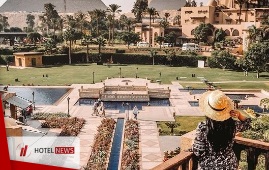
Two consecutive months of profit growth gave way to a contraction in November for hotels in the Middle East & North Africa as GOPPAR declined year-over-year. The region had a nice, albeit short, run of GOPPAR gains prior to November’s downtick, but the drop is more in line with MENA’s overall dim 2019 performance. If there is a silver lining, the 1.7% drop is the smallest YOY decrease of the year and far smaller than the YTD number of -4.2%. Rooms revenue was down 2.6% compared to the same month last year, dragged down by a 5.1% drop in room rate. Occupancy for the month was up 1.9 percentage points to 76.2%. The drop in rooms RevPAR, along with a 1.5% YOY decrease in F&B RevPAR, equated into an overall decrease in total revenue of 2.7% YOY. And while generating revenue in November proved onerous, expense control was a bright spot. Total overhead costs on a per-available-room basis were down 3.4% YOY and total labour costs were also down—2.4% YOY. Utility expenses came down 3.0%, while overall Property & Maintenance costs were down 2.6%. In contrast to the totality of MENA, Egypt pushed out a positive month of profit, with a 2.9% overall YOY jump. This came on the back of a 1.3% rise in RevPAR and a 3.6% rise in TRevPAR. The resort town of Sharm el-Sheikh saw a huge GOPPAR leap of 65.1% YOY, bolstered by a 28.6% jump in RevPAR. The fortunes of Sharm el-Sheikh hotels have turned for the better after having dealt with its share of terrorist attacks, including in 2005 and, in 2015, when a Russian jetliner departed the city and subsequently exploded over Sinai killing 224 people onboard. Thereafter, the UK grounded flights to the beach getaway, and weekly arrivals fell from 10,000 to zero. In December, flights resumed from the UK, which should put a further jolt into the resort town’s tourism economy. Meanwhile, Egypt’s capital, Cairo, did not share the same fortune, checking in with a 1.5% decrease in GOPPAR YOY. RevPAR was down 3.4% YOY, a result of both a drop in rate (down 1.9%) and occupancy (down 1.2 percentage points). TRevPAR for the month was up 0.8% due to a 9.2% YOY increase in F&B RevPAR. It was another down month for Dubai, which saw its profit drop 9.6% YOY. The emirate has only had one month of YOY GOPPAR growth in the last 15, plagued by excessive and unabated hotel supply and development. Coming months and years will require hoteliers to be more cost-conscious than revenue-conscious, according to many experts. RevPAR in Dubai was down 9.3% YOY in November, as room rate dropped 8.6% YOY combined with a -0.7% percentage-point decline in occupancy. Total overhead costs declined in the month, down 6.2% YOY, but not enough to produce positive profit growth, evidenced by a 0.4 percentage-point decline in profit margin.
Create: Dec 30, 2019 Edit: Dec 30, 2019 International News
